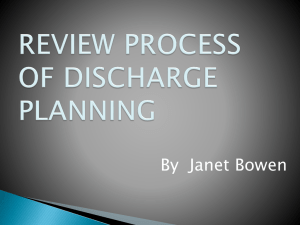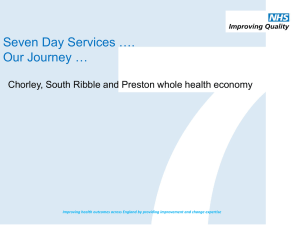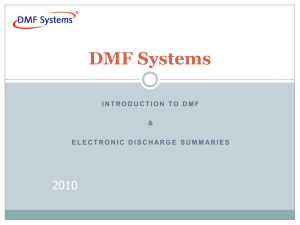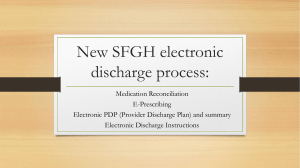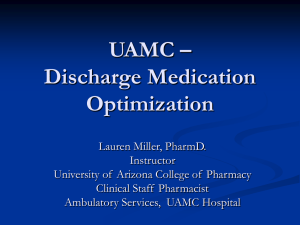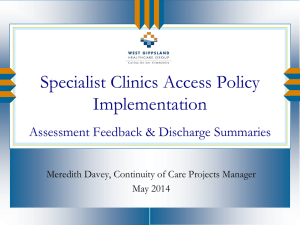NHS ORKNEY - Quality Improvement Hub
advertisement
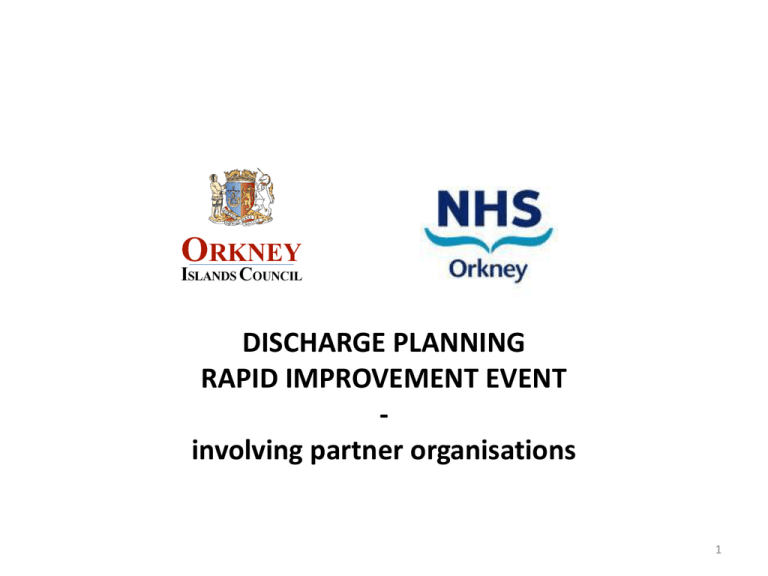
DISCHARGE PLANNING RAPID IMPROVEMENT EVENT involving partner organisations 1 57 70 Patients registered with a GP Practice 670 505 231 30 524 127 22 2235 373 3 310 3018 Skerryvore 7132 Heilendi 407 1337 3372 Priorities leading to involvement with LA • Many issues surrounding discharge process • A complex process involving many staff from a range of organisations • A number of incidents and complaints relating to this area • Issues relating to unsatisfactory discharge thought by staff to impact on quality of care • No current joint discharge policy • Orkney Health and Care – substantive from April 2010 • Core Team – multidisciplinary team representing all aspects of the service from Voluntary sector, Health and Social care • Opportunistic 3 Goals of the RIE • Implementation of agreed patient focused pathway from admission to discharge ‘home’ • All planned discharges will be safe and appropriate • Timely access to health and care services • To have an agreed, relevant, up to date, joint discharge policy, owned by all • Effective communication with all agencies at all relevant stages to support patient pathway • Initiate a process to achieve a shared and unified IT system across Orkney Health & Care. 4 Achievements during the week • Agreed to initiate Multi-disciplinary team meetings on a daily basis (MDTs) at 11am each day in the Acute area to plan discharge for each patient in the Acute area in a proactive manner • Agreed to develop Standard Operating Procedures for pre-admission and admission • Agreed to develop Standard Operating Procedures for the MDTs with immediate effect • Agreed to undertake reflective practice 5 Longer term actions • An action plan was agreed at the end of the RIE with 48 actions all of which were owned and had a timescale associated with them • Some of the major ones included: – Improving communication between acute care, primary care and social care – Improved admin support – Transport review – Development of Admit to discharge documentation 6 Outstanding Actions • • • • • • Improved patient information A new joint discharge policy Widespread use of PARIS across health & care IT system for Minor Injuries Improved (web-based) discharge system Pharmacy improvements including self medication assessments where appropriate • Linked governance systems for joint working • Education and training to staff to underpin principles of discharge planning 7 Measurable Benefits • Reduction in number of emergency readmissions to hospital following discharge • Reduction in length of stay for above • Reduction in number of incidents reported and complaints regarding discharges • Red Cross - improved flow due to improved patient transport and hostel service (reducing inpatient length of stay) and communication • Questionnaire responses from staff and patients 8 Learning and Challenges • Opportunity to foster good partnership working and improved integration • Opportunity to understand each others challenges and perspectives (intra and inter-agency) • Opportunity to develop joint aims and visions and joint training • Cultural differences (e.g. incident reporting) • Work towards development of joint policies and protocols • Joint governance – person centred approach/involvement • Joint discharge arrangements • A seamless service • Ensure all voluntary sector partners with an interest are involved where possible Where Next? • Ensure actions continue to be followed up • Overcoming barriers that were identified e.g. cultural differences – shadowing and joint training • Ongoing challenge to access separate IT systems • Continue to improve communication • Roll out to other hospital areas




